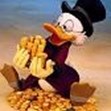O S&P 500 deve cair 55% nos próximos 5 anos !!!
18 mensagens
|Página 1 de 1
Re: S&P
mais_um Escreveu:Clinico Escreveu:"Olhe que não Dr. Cunhal, olhe que não" (frase célebre dum estadista para outro nos tempos quentes da pós-revolução)
Uma pequena correção, quem disse foi o Dr. Cunhal a um estadista...

Se tiverem paciencia vejam o video completo que é engraçado, caso contrário , vejam a partir do 4º minuto
Um abraço
Alexandre Santos
Esqueci-me do link...
http://entreasbrumasdamemoria.blogspot. ... embro.html
Re: S&P
Clinico Escreveu:"Olhe que não Dr. Cunhal, olhe que não" (frase célebre dum estadista para outro nos tempos quentes da pós-revolução)
Uma pequena correção, quem disse foi o Dr. Cunhal a um estadista...
Se tiverem paciencia vejam o video completo que é engraçado, caso contrário , vejam a partir do 4º minuto
Um abraço
Alexandre Santos
Re: swd
MarcoAntonio Escreveu:luislobs. Escreveu:Acho q o pessoal devia sair um pouco do escritorio, apanhar uma bruta bebedeira...no outro dia via as coisas de outra forma.
È muita futurologia, muito Maya a tentar dar nas vistas.....
.tempos de crise..
Isto realmente tem sido um festival de "previsões". Eu não me recordo de um período em que se lançassem tantas previsões (que partem de vários quadrantes, parece contagioso)...
Logo num período de tanta incerteza e tanta volatilidade.
De facto é importante saber isso.
A partir de agora vou negociar apoiado nessa ideia.
Daqui a 5 anos xpto.
É que é já a seguir.
Abraço
Rounders
Abraço
Rounders
http://rounderstrader.blogspot.com/
Analises ao principais indices diariamente. +-50 updates por mês.
"O mercado não é uma prova de 100 metro é uma maratona".Carlos Júlio
Rounders
http://rounderstrader.blogspot.com/
Analises ao principais indices diariamente. +-50 updates por mês.
"O mercado não é uma prova de 100 metro é uma maratona".Carlos Júlio
Re: swd
luislobs. Escreveu:Acho q o pessoal devia sair um pouco do escritorio, apanhar uma bruta bebedeira.
Ora aí está algo interessante. Pena que cá (ainda) não haja o fenómeno pub-after-job como em UK...
Qual Magalhães, punhamos o país a andar para a frente com pints na mão!
Era uma brincadeira, espero que tenhas entendido...

FLOP - Fundamental Laws Of Profit
1. Mais vale perder um ganho que ganhar uma perda, a menos que se cumpra a Segunda Lei.
2. A expectativa de ganho deve superar a expectativa de perda, onde a expectativa mede a
__.amplitude média do ganho/perda contra a respectiva probabilidade.
3. A Primeira Lei não é mesmo necessária mas com Três Leis isto fica definitivamente mais giro.
Re: swd
MarcoAntonio Escreveu:crg Escreveu:Marco, incerteza?
Mas ainda há muitas dúvidas?
Bem há dias para tudo, hoje é dia de bebedeira.
Olha, sabes o que te digo?
Se fosse sexta-feira e fosses deputado, mandava-te para junto da tua família!
Como não é sexta-feira e como penso que não és deputado...
Vai trabalhar!
PS: Alternativamente podia mandar-te ir elaborar projectos de lei minimalistas que propõe a suspensão de coisas que estão em vigor...
Marco,
Não leves a mal. Não tenho a capacidade irónica do Mech ou da Scpnuno.
Prometo que futuramente me vou conter.
Um abraço.
“A elevação dos pensamentos denuncia a nobreza dos sentimentos.”
Esta não falha, é do Prof.Bambu:
Confirmando a resistência forte na zona onde nos encontramos (900), o índice pode quebrar e atingir novos mínimos.
Atingindo novos mínimos, vai quebrar o range onde tem andado (entre os 775 e os 1000).
Quebrando este range pode activar uma descida, que na mais conservadora das hipóteses terá como objectivo os 600 pontos.
Claro que antes disso haverá um pullback até à zona dos antígos mínimos (700-800).
O gráfico apresentado é o fecho diário e gosto muito das linhas paralelas, quer nas subidas, quer nas descidas.
E também gosto de especular à maluca, pois gosto...




Confirmando a resistência forte na zona onde nos encontramos (900), o índice pode quebrar e atingir novos mínimos.
Atingindo novos mínimos, vai quebrar o range onde tem andado (entre os 775 e os 1000).
Quebrando este range pode activar uma descida, que na mais conservadora das hipóteses terá como objectivo os 600 pontos.
Claro que antes disso haverá um pullback até à zona dos antígos mínimos (700-800).
O gráfico apresentado é o fecho diário e gosto muito das linhas paralelas, quer nas subidas, quer nas descidas.
E também gosto de especular à maluca, pois gosto...
There are two kinds of investors: those who don't know where the market is headed, and those who don't know that they don't know.
William Bernstein
William Bernstein
S&P
Quem sou eu para comentar, mas costumo ter o Fogueiro em alta consideração.
Se forem ao tópico dele ("tal e coisa e baby boomers"), numa intervenção recente, que costuma ser bem fudamentada, ele tambem vê uma possivel queda do S&P para perto dos 500.
Eu penso que estamos um pouco enebriados com a época de Natal e Ano Novo nas bolsas, mas se posermos os pés no chão, têm lido ou ouvido alguma notícia positiva ??? Tirando esses doidos que preconizam que isto vai subir ás estrelas??? O desemprego continua e vai continuar a subir, os preços das casas ainda não pararam de descer, o deficit nos EUA aumentou "inesperadamente"
 !!! Continua-se a pedir emprestado etc etc etc
!!! Continua-se a pedir emprestado etc etc etc
O Dólar lá vai querendo cair mas ainda não foi ao trambulhão, o ouro sobe o petroil tambem, vamos ver até quando... E as bolsas vão subir todas???
"Olhe que não Dr. Cunhal, olhe que não" (frase célebre dum estadista para outro nos tempos quentes da pós-revolução)
Abraços
Clinico
Se forem ao tópico dele ("tal e coisa e baby boomers"), numa intervenção recente, que costuma ser bem fudamentada, ele tambem vê uma possivel queda do S&P para perto dos 500.
Eu penso que estamos um pouco enebriados com a época de Natal e Ano Novo nas bolsas, mas se posermos os pés no chão, têm lido ou ouvido alguma notícia positiva ??? Tirando esses doidos que preconizam que isto vai subir ás estrelas??? O desemprego continua e vai continuar a subir, os preços das casas ainda não pararam de descer, o deficit nos EUA aumentou "inesperadamente"
O Dólar lá vai querendo cair mas ainda não foi ao trambulhão, o ouro sobe o petroil tambem, vamos ver até quando... E as bolsas vão subir todas???
"Olhe que não Dr. Cunhal, olhe que não" (frase célebre dum estadista para outro nos tempos quentes da pós-revolução)
Abraços
Clinico
Editado pela última vez por Clinico em 11/12/2008 21:27, num total de 1 vez.
- Mensagens: 6662
- Registado: 1/6/2003 0:13
Re: swd
crg Escreveu:Marco, incerteza?
Mas ainda há muitas dúvidas?
Bem há dias para tudo, hoje é dia de bebedeira.
Olha, sabes o que te digo?
Se fosse sexta-feira e fosses deputado, mandava-te para junto da tua família!
Como não é sexta-feira e como penso que não és deputado...
Vai trabalhar!
PS: Alternativamente podia mandar-te ir elaborar projectos de lei minimalistas que propõe a suspensão de coisas que estão em vigor...
FLOP - Fundamental Laws Of Profit
1. Mais vale perder um ganho que ganhar uma perda, a menos que se cumpra a Segunda Lei.
2. A expectativa de ganho deve superar a expectativa de perda, onde a expectativa mede a
__.amplitude média do ganho/perda contra a respectiva probabilidade.
3. A Primeira Lei não é mesmo necessária mas com Três Leis isto fica definitivamente mais giro.
Re: swd
MarcoAntonio Escreveu:Logo num período de tanta incerteza e tanta volatilidade.
crg Escreveu:
Marco, incerteza?
Mas ainda há muitas dúvidas?
Bem há dias para tudo, hoje é dia de bebedeira.
EU tenho certezas! Absolutas e indesmentiveis! e quero ver quem me desmente:
Nem o SP nem nenhum outro indice - por sinal, nem nenhuma acção - vai cair mais de 100%! Quanto a subir, pode subir 200% ou mais sem problemas
E agora? fui promovida a Maya?
Esta é a vantagem da ambição:
Podes não chegar á Lua
Mas tiraste os pés do chão...
Podes não chegar á Lua
Mas tiraste os pés do chão...
Re: swd
MarcoAntonio Escreveu:luislobs. Escreveu:Acho q o pessoal devia sair um pouco do escritorio, apanhar uma bruta bebedeira...no outro dia via as coisas de outra forma.
È muita futurologia, muito Maya a tentar dar nas vistas.....
.tempos de crise..
Isto realmente tem sido um festival de "previsões". Eu não me recordo de um período em que se lançassem tantas previsões (que partem de vários quadrantes, parece contagioso)...
Logo num período de tanta incerteza e tanta volatilidade.
Marco, incerteza?
Mas ainda há muitas dúvidas?
Bem há dias para tudo, hoje é dia de bebedeira.
“A elevação dos pensamentos denuncia a nobreza dos sentimentos.”
- Mensagens: 869
- Registado: 6/11/2002 16:28
- Localização: Avr
Re: swd
luislobs. Escreveu:Acho q o pessoal devia sair um pouco do escritorio, apanhar uma bruta bebedeira...no outro dia via as coisas de outra forma.
È muita futurologia, muito Maya a tentar dar nas vistas.....
.tempos de crise..
Isto realmente tem sido um festival de "previsões". Eu não me recordo de um período em que se lançassem tantas previsões (que partem de vários quadrantes, parece contagioso)...
Logo num período de tanta incerteza e tanta volatilidade.
FLOP - Fundamental Laws Of Profit
1. Mais vale perder um ganho que ganhar uma perda, a menos que se cumpra a Segunda Lei.
2. A expectativa de ganho deve superar a expectativa de perda, onde a expectativa mede a
__.amplitude média do ganho/perda contra a respectiva probabilidade.
3. A Primeira Lei não é mesmo necessária mas com Três Leis isto fica definitivamente mais giro.
swd
Acho q o pessoal devia sair um pouco do escritorio, apanhar uma bruta bebedeira...no outro dia via as coisas de outra forma.
È muita futurologia, muito Maya a tentar dar nas vistas.....
.tempos de crise..
È muita futurologia, muito Maya a tentar dar nas vistas.....
.tempos de crise..
-
Sonhar, saber esquecer, gostar de aprender, ter paciência para repetir, ousar, arriscar, partilhar é o caminho para ter sucesso numa vivência equilibrada do uso do tempo e da vida. - Ti Belmiro 01-2008
voce nasce sem pedir, morre sem querer....aproveite o intervalo
Sonhar, saber esquecer, gostar de aprender, ter paciência para repetir, ousar, arriscar, partilhar é o caminho para ter sucesso numa vivência equilibrada do uso do tempo e da vida. - Ti Belmiro 01-2008
voce nasce sem pedir, morre sem querer....aproveite o intervalo
- Mensagens: 715
- Registado: 13/12/2007 10:15
O S&P 500 deve cair 55% nos próximos 5 anos !!!
Será que irá mesmo cair desta forma ?
O artigo abaixo está relatado no bloomberg e quem o profere é Patrick Rial.
"Dec. 10 (Bloomberg) -- A global stock slump may have further to go, according to Tobin’s Q ratio, which compares the market value of companies to the cost of their constituent parts, CLSA Ltd. strategist Russell Napier said.
The ratio, developed in 1969 by Nobel Prize-winning economist James Tobin, shows the Standard & Poor’s 500 Index is still too expensive relative to the cost of replacing assets, said Napier. While the 39 percent drop in the index this year pushed equity prices below replacement cost, history suggests the ratio must sink further as deflation sets in, he said. The S&P may plunge another 55 percent to 400 by 2014, Napier said.
“The Q has come down to its average, however it’s not always stopped at the average,” said Napier, Institutional Investor’s top-ranked Asia strategist from 1997-1999. “It has tended to go significantly below that in long bear markets.”
Shares have fallen this year as the worst financial crisis since the Great Depression caused almost $1 trillion of bank losses and dragged the world’s largest economies into recessions. The MSCI World Index has tumbled 44 percent in 2008, set for the biggest annual decline in its four-decade history.
The S&P 500 today increased 1.2 percent to 899.24.
Bear-Market Scholar
Napier, who teaches at Edinburgh Business School and advised clients to buy oil in 2002 before it tripled, based his S&P 500 forecast on the Q ratio for U.S. equities as well as the 10-year cyclically adjusted price-to-earnings ratio, another measure of long-term value.
Before the trough in 2014, investors are likely to see a so- called bear market rally for the next two years as central bank actions delay the onset of deflation, Napier said.
“In the long run, stocks will become even cheaper,” said Brian Shepardson, who helps manage $1.9 billion at Xenia, Ohio- based James Investment Research. The firm’s James Balanced Golden Rainbow Fund beat 98 percent of similar funds this year. “There’s a likelihood of some type of rally and further pullback surpassing the lows we’ve already set.”
The Q ratio on U.S. equities has dropped to 0.7 from a peak of 2.9 in 1999, and reaching 0.3 has always signaled the end of a bear market, said Napier, 44, the author of “Anatomy of the Bear,” a study of how business cycles change course. The Q ratio for U.S. equities has fluctuated between 0.3 and 3 in the past 130 years.
When the gauge is more than one, it indicates the market is overvaluing company assets, while a Q ratio of less than one signifies shares are undervalued because it is cheaper to buy companies than to build them from the ground up.
Previous Bottoms
At the end of the four largest U.S. bear markets in 1921, 1932, 1949 and 1982, the Q ratio fell to 0.3 or lower, and history is likely to repeat, said Napier. From the 1982 trough, the S&P 500 grew more than 14-fold to the middle of 2000, when Napier says the last bull market ended.
Napier started his career in 1989 as a fund manager for the Scottish firm Baillie Gifford & Co. As CLSA’s Asian strategist he called the bottom of Asian equity markets in mid-1998. This year, he predicted gains in Japanese stocks prior to a 38 percent decline in the Nikkei 225 Stock Average.
Napier’s prediction for a plunge in the S&P 500 hinges on deflation that is unlikely to materialize, according to Bob Brusca, president of Fact & Opinion Economics and a former chief of international markets at the New York Federal Reserve. Consumer prices dropped 1 percent in October. So-called core prices, which exclude food and energy, dropped just 0.1 percent, and prices will probably increase 0.7 percent in 2009, according to the median estimate of economists surveyed by Bloomberg.
No Deflation
“Oil and commodity prices have fallen, but we’re not seeing a widespread deflation like he’s talking about,” Brusca said in an interview in New York. “To have what he discusses, we’d have to have terrible deflation.”
Measures such as Tobin’s Q ratio and a 10-year price-to- earnings ratio are “valuable tools,” said Andrew Milligan, the Edinburgh-based head of global strategy at Standard Life Investments, which oversees about $190 billion. Milligan said he is bullish on U.S. equities for now as central bank efforts to fight deflation will push the market higher.
Awaiting Signals
“For those who are worried about losing much of their investment almost overnight, very clearly you’d want to wait for those signals to give a much stronger case,” he said. “The bear market will have “a painful resolution, it’s just a question of how painful, over what period of time and for what parties.”
Federal Reserve Chairman Ben S. Bernanke’s indication that he will use “quantitative easing” to prevent deflation points to a stock market rally that may last for the next two years, Napier said. With quantitative easing, a tool pioneered by the Bank of Japan, central banks can stimulate inflation by printing money and flooding the market with cash in order to encourage consumers to spend.
The government’s efforts will eventually fail as ballooning government debt devalues the dollar, causes investors to flee U.S. assets and takes the S&P 500 to its eventual bottom in 2014, Napier said.
“Bear markets always end for exactly the same reason, and that is the market begins to price in deflation,” he said. “The results are always horrific.”

O artigo abaixo está relatado no bloomberg e quem o profere é Patrick Rial.
"Dec. 10 (Bloomberg) -- A global stock slump may have further to go, according to Tobin’s Q ratio, which compares the market value of companies to the cost of their constituent parts, CLSA Ltd. strategist Russell Napier said.
The ratio, developed in 1969 by Nobel Prize-winning economist James Tobin, shows the Standard & Poor’s 500 Index is still too expensive relative to the cost of replacing assets, said Napier. While the 39 percent drop in the index this year pushed equity prices below replacement cost, history suggests the ratio must sink further as deflation sets in, he said. The S&P may plunge another 55 percent to 400 by 2014, Napier said.
“The Q has come down to its average, however it’s not always stopped at the average,” said Napier, Institutional Investor’s top-ranked Asia strategist from 1997-1999. “It has tended to go significantly below that in long bear markets.”
Shares have fallen this year as the worst financial crisis since the Great Depression caused almost $1 trillion of bank losses and dragged the world’s largest economies into recessions. The MSCI World Index has tumbled 44 percent in 2008, set for the biggest annual decline in its four-decade history.
The S&P 500 today increased 1.2 percent to 899.24.
Bear-Market Scholar
Napier, who teaches at Edinburgh Business School and advised clients to buy oil in 2002 before it tripled, based his S&P 500 forecast on the Q ratio for U.S. equities as well as the 10-year cyclically adjusted price-to-earnings ratio, another measure of long-term value.
Before the trough in 2014, investors are likely to see a so- called bear market rally for the next two years as central bank actions delay the onset of deflation, Napier said.
“In the long run, stocks will become even cheaper,” said Brian Shepardson, who helps manage $1.9 billion at Xenia, Ohio- based James Investment Research. The firm’s James Balanced Golden Rainbow Fund beat 98 percent of similar funds this year. “There’s a likelihood of some type of rally and further pullback surpassing the lows we’ve already set.”
The Q ratio on U.S. equities has dropped to 0.7 from a peak of 2.9 in 1999, and reaching 0.3 has always signaled the end of a bear market, said Napier, 44, the author of “Anatomy of the Bear,” a study of how business cycles change course. The Q ratio for U.S. equities has fluctuated between 0.3 and 3 in the past 130 years.
When the gauge is more than one, it indicates the market is overvaluing company assets, while a Q ratio of less than one signifies shares are undervalued because it is cheaper to buy companies than to build them from the ground up.
Previous Bottoms
At the end of the four largest U.S. bear markets in 1921, 1932, 1949 and 1982, the Q ratio fell to 0.3 or lower, and history is likely to repeat, said Napier. From the 1982 trough, the S&P 500 grew more than 14-fold to the middle of 2000, when Napier says the last bull market ended.
Napier started his career in 1989 as a fund manager for the Scottish firm Baillie Gifford & Co. As CLSA’s Asian strategist he called the bottom of Asian equity markets in mid-1998. This year, he predicted gains in Japanese stocks prior to a 38 percent decline in the Nikkei 225 Stock Average.
Napier’s prediction for a plunge in the S&P 500 hinges on deflation that is unlikely to materialize, according to Bob Brusca, president of Fact & Opinion Economics and a former chief of international markets at the New York Federal Reserve. Consumer prices dropped 1 percent in October. So-called core prices, which exclude food and energy, dropped just 0.1 percent, and prices will probably increase 0.7 percent in 2009, according to the median estimate of economists surveyed by Bloomberg.
No Deflation
“Oil and commodity prices have fallen, but we’re not seeing a widespread deflation like he’s talking about,” Brusca said in an interview in New York. “To have what he discusses, we’d have to have terrible deflation.”
Measures such as Tobin’s Q ratio and a 10-year price-to- earnings ratio are “valuable tools,” said Andrew Milligan, the Edinburgh-based head of global strategy at Standard Life Investments, which oversees about $190 billion. Milligan said he is bullish on U.S. equities for now as central bank efforts to fight deflation will push the market higher.
Awaiting Signals
“For those who are worried about losing much of their investment almost overnight, very clearly you’d want to wait for those signals to give a much stronger case,” he said. “The bear market will have “a painful resolution, it’s just a question of how painful, over what period of time and for what parties.”
Federal Reserve Chairman Ben S. Bernanke’s indication that he will use “quantitative easing” to prevent deflation points to a stock market rally that may last for the next two years, Napier said. With quantitative easing, a tool pioneered by the Bank of Japan, central banks can stimulate inflation by printing money and flooding the market with cash in order to encourage consumers to spend.
The government’s efforts will eventually fail as ballooning government debt devalues the dollar, causes investors to flee U.S. assets and takes the S&P 500 to its eventual bottom in 2014, Napier said.
“Bear markets always end for exactly the same reason, and that is the market begins to price in deflation,” he said. “The results are always horrific.”
AC Investor Blog
www.ac-investor.blogspot.com -
Análises Técnicas de activos cotados em Wall Street. Os artigos do AC Investor podem também ser encontrados diariamente nos portais financeiros, Daily Markets, Benzinga, Minyanville, Solar Feeds e Wall Street Pit, sendo editor e contribuidor. Segue-me também no Twitter : http://twitter.com/#!/ACInvestorBlog e subscreve a minha newsletter.
www.ac-investor.blogspot.com -
Análises Técnicas de activos cotados em Wall Street. Os artigos do AC Investor podem também ser encontrados diariamente nos portais financeiros, Daily Markets, Benzinga, Minyanville, Solar Feeds e Wall Street Pit, sendo editor e contribuidor. Segue-me também no Twitter : http://twitter.com/#!/ACInvestorBlog e subscreve a minha newsletter.
18 mensagens
|Página 1 de 1
Quem está ligado:





